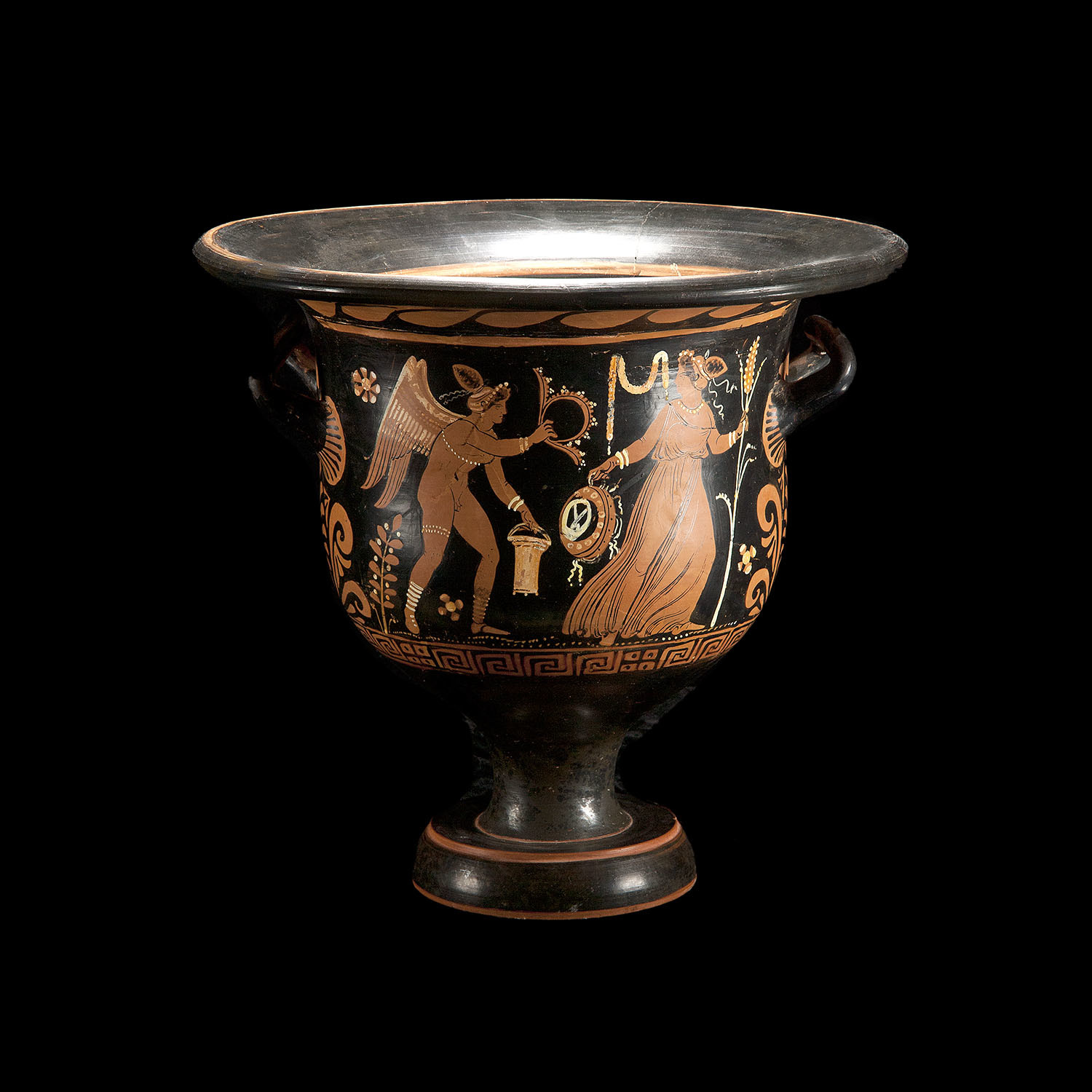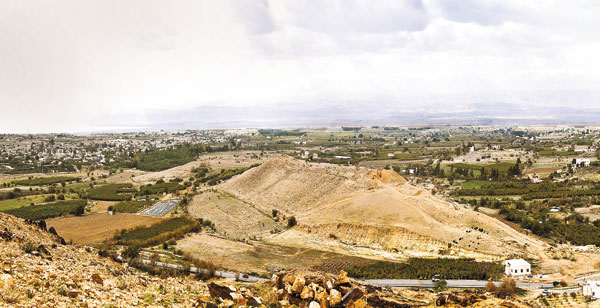All good, let's agree to disagree.
J.
Here is Mark's response, which I've just received...
Dear Randy,
I read that Johann wrote, “Jude 6-7: The Greek Text Demands a Sexual Interpretation of
the Angels’ Sin”. Let me say I appreciate and respect Johann’s attention to the Greek
text (semantics, grammar, syntax) and to the context. I will simply provide my own
observations relying on the resources I have at hand.
Here is the text from the NET Bible, which I have chosen for its helpful footnotes:
You also know that the angels who did not keep within their proper
domain but abandoned their own place of residence, he has kept in
eternal chains in utter darkness, locked up for the judgment of the great
Day. 7 So also Sodom and Gomorrah and the neighboring towns, since
they indulged in sexual immorality and pursued unnatural desire in a way
similar to these angels, are now displayed as an example by suffering the
punishment of eternal fire. (NET Bible)
From the ESV, for its adoption of a word-for-word translation philosophy:
6And the angels who did not stay within their own position of authority,
but left their proper dwelling, he has kept in eternal chains under gloomy
darkness until the judgment of the great day— 7just as Sodom and
Gomorrah and the surrounding cities, which likewise indulged in sexual
immorality and pursued unnatural desire, d serve as an example by
undergoing a punishment of eternal fire.
And the NIV, for its emphasis on using the most natural English to accurately convey the
biblical language:
6And the angels who did not keep their positions of authority but
abandoned their proper dwelling—these he has kept in darkness, bound
with everlasting chains for judgment on the great Day. 7In a similar way,
Sodom and Gomorrah and the surrounding towns gave themselves up to
sexual immorality and perversion. They serve as an example of those who
suffer the punishment of eternal fire.
I have been taught by my seminary professors to rely on the best translations where
they agree. Here, the NET, ESV, and NIV agree as to who sinned, viz., committing
sexual immorality and perversion: Sodom and Gomorrah and the towns around them.
These would be the subject of the action according to these translations. More relevant
to this discussion is that the sins of angels is compared to that of Sodom and Gomorrah
and the surrounding cities with the expressions “in a way similar” (NET), “likewise”
(ESV), and “in a similar way” (NIV).
Johann makes the observation that a Greek (near demonstrative) pronoun in the dative
masculine plural, τούτοις, meaning “(with) these”, actually serves as the subject for the
2
action. This grammatical point is blurred by the translations above which use “they”
(NIV), “which” (ESV), and “themselves” (NIV). Johann goes on to state, “. . . [τούτοις]
cannot refer to the cities (πόλεις, feminine plural). It must refer back to the most recent
masculine plural antecedent - namely, the angels in Jude 6.”
This is a good argument grammatically. However, I find the footnote in the NET Bible at
the word “desire” enough to make me cautious. I’ll split the quoted single paragraph
footnote into three paragraphs, where the first paragraph discusses a semantic and
biblical problem with equating the sin of the angels with that of the cities:
tn Grk “strange flesh.” This phrase has been variously interpreted. It could
refer to flesh of another species (such as angels lusting after human
flesh). This would aptly describe the sin of the angels, but not easily
explain the sin of Sodom and Gomorrah. It could refer to the homosexual
practices of the Sodomites, but a difficulty arises from the use of ἕτερος
({etero" [sic.]; “strange,” “other”). When this is to be distinguished from
ἄλλος (allos, “another”) it suggests “another of a different kind.” If so,
would that properly describe homosexual behavior? In response, the
language could easily be compact: “pursued flesh other than what was
normally pursued.” However, would this find an analogy in the lust of
angels (such would imply that angels normally had sexual relations of
some sort, but cf. Matt 22:30)?
In the second selection from the footnote, a different issue with gender agreement is
discussed where the feminine plural participles describe the sinful activity of the
surrounding cities but not that of Sodom and Gomorrah. I find this argument
unconvincing personally. However, BAGD, the best Greek lexicon, identifies both
Sodom and Gomorrah as neuter in gender, not masculine. That would not invalidate the
point made in the footnote, since neither a neuter gender would suffer the same lack of
concord with the participles that a masculine gender would suffer.
Another alternative is that the focus of the parallel is on the activity of the
surrounding cities and the activity of the angels. This is especially
plausible since the participles ἐκπορνεύσασαι (ekporneusasai, “having
indulged in sexual immorality”) and ἀπελθοῦσαι (apelqousai, “having
pursued”) have concord with “cities” (πόλεις, poleis), a feminine plural
noun, rather than with Sodom and Gomorrah (both masculine nouns). If
so, then their sin would not necessarily have to be homosexuality.
In this third selection, the footnote author (Daniel Wallace?) seems to lean toward
understanding “heinous sexual immorality” as having been committed by all of the cities,
as well as the angels. Occurrences of ”constructio ad sensum” are certainly found in the
New Testament, regarding pronouns and even verbs and gender (dis)agreement.
However, most likely the feminine participles are used because of
constructio ad sensum (construction according to sense). That is, since
3
both Sodom and Gomorrah are cities, the feminine is used to imply that all
the cities are involved. The connection with angels thus seems to be
somewhat loose: Both angels and Sodom and Gomorrah indulged in
heinous sexual immorality. Thus, whether the false teachers indulge in
homosexual activity is not the point; mere sexual immorality is enough to
condemn them.
The footnote, together with Johann’s point, actually make me reluctant to draw a firm
conclusion as to the nature of the angels’ sin. The discussions rest largely on gender
agreement or disagreement, after all, and I was taught to tread carefully when building
one’s interpretation of a text simply on grammar alone. To Johann’s credit, he goes
further in supporting his view. However, when one of the world’s foremost Greek experts
(Wallace) puzzles over the Greek text as he does above, (not recognizing Johann’s
point but agreeing with the outcome?) am I to be convinced based on my own limited
understanding of the Greek? (I hope to be humble and not just fearful in withholding
final judgment.)
On this more personal note, I don’t think it is a bias of mine that makes me hesitant to
draw a conclusion about whether angels committed sexual sins from this review of Jude
6-7. (I’ve assumed that this is the aim of our study.) On the one hand, I lean away from
that view based on Matthew 22:30, as mentioned above in the footnote (see also Luke
20:34-36). Also, if angels are spirits (Hebrews 1:14) and spirits are not flesh and blood
(Luke 24:39), they would presumably not have physical bodies with which to engage in
sexual acts. On the other hand, I could lean toward that view since angels ate food that
Abraham offered them (Genesis 18:8) and Jacob may have wrestled with one (the
preincarnate Christ?; Genesis 32:22-32; Hosea 12:3-4). Plus, angels can appear to
have human bodies, act in the physical world, and speak in the physical realm. (So can
God.) But to what degree?
These limited examples I suspect have all been part of an ongoing forum discussion. I
also expect that they have gone far in supporting one view or another. I am reluctant to
“jump down that hole” because I have yet to see this particular discussion edifying to my
fellow believers. Instead, it seems to have been divisive with no side yielding when
considering the proofs offered by others. Being neutral is not the moral high ground, but
I hope that it is the reasonable choice when one’s personal search remains
inconclusive. Please know, this is not because I found the arguments poorly presented,
but because I find good arguments on both sides.
I’m reminded that a few years ago, at Peninsula Bible Fellowship in Bremerton,
Washington, that two, visiting, internationally recognized Hebrew scholars were asked
on separate occasions about the Nephilim. Each one responded without hesitating, “I
don’t know.” I’m glad I didn’t have to hold my breath for an answer, because I probably
would have. And their response made me smile .
Mark






